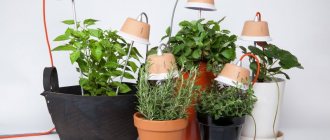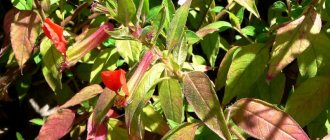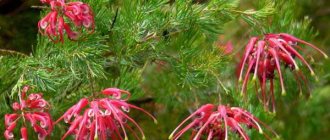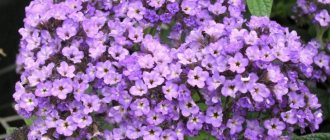Agave belongs to the genus of unisexual plants. Belongs to the Agave subfamily and the Asparagus family. There are about 300 species in total. Agave is common on the islands of the Caribbean, Central America and the southern United States. The plant was brought to Europe in the second half of the 16th century. It quickly gained fame. It began to be cultivated as an exotic and ornamental plant. In the Mediterranean countries and on the Black Sea coast of Crimea and the Caucasus, agave is grown in open ground, and in temperate and northern latitudes it decorates greenhouses and house rooms.
About the plant
The name agave comes from the Greek “agauos”, which means “amazing” and “noble”. The plant is named after the daughter of one of the most ancient mythical kings. In nature it blooms quite rarely, at 6-15 years of life. The peduncle forms an impressive up to 12 m with several thousand flowers.
Agave is a perennial herbaceous succulent plant with a shortened stem, around which a rosette of hard and fleshy leaves develops. The leaves differ from the leaves of other plants in the presence of water-storing tissue.
Agave leaves are thin, elongated and end at the ends with sharp and hard thorns, therefore, to avoid troubles, they should be trimmed when growing at home.
What does agave look like - description of the plant
Almost all types of succulents do not have a trunk or it is very short. Agave is no exception: the small stem is almost completely hidden in the soil. The above-ground part of the plant is made up of a wide, rounded rosette of leaves. The leaves of the cactus are very beautiful, wide and fleshy. The edges of the leaf blade are decorated with small spines. And the leaf ends with a long sharp thorn. Depending on the variety, the color of the leaves may vary. But the main thing remains the green color and elegant waxy coating. Only the shade changes, from blue to gray, and in some species the leaves are decorated with white or yellow stripes.
Under natural conditions, when the cactus grows warm all year round, it can grow simply huge rosettes. For indoor growing, more compact varieties are used. Thus, there are dwarf agaves, the diameter of which does not exceed 5 cm.
Agave bloom
At home, agave practically does not bloom, so it is sometimes called agave, mistakenly believing that it blooms after 100 years. In fact, in its homeland and in open ground, agave blooms in the 10-15th year of life, in greenhouses - after 20-30 years. But there are also species that actually bloom after 100 years. The flowering of agave is unusually majestic: it grows a long, strong peduncle up to 8 m in height, bearing at the top a huge inflorescence in the shape of a candelabra, numbering several thousand yellowish-white flowers. After flowering, the plant dies, and young shoots grow from the buds of the rhizomes.
Agave flowering
Features of growing at home. Briefly
When cultivating crops at home, the following factors are taken into account:
| Temperature | In summer it should be +16…29С, in winter it varies within +10…17С. |
| Air humidity | Indicators of this factor should be low. |
| Lighting | Plants prefer powerful and bright lighting. It is recommended to place pots with them on window sills located on the south side of houses. |
| Watering | It belongs to drought-resistant crops, which is due to its southern origin. In summer, crops are limited to infrequent irrigation; in winter, they are completely limited to a minimum. |
| Priming | The plant is suitable for purchased soil, which should be heavy in composition, but at the same time sufficiently permeable. It should contain a small amount of sand. You can prepare the soil mixture yourself. To do this, mix 3 parts of perlite or coarse sand, 2 parts of leaf soil (humus) and garden soil, as well as lime, bone meal or eggshells. The acidity of the resulting soil mixture should vary from 6.8 to 7. The soil is poured into a pot, which is equipped with through technological holes to remove excess water. |
| Feeding and fertilizer | It is recommended to use water-soluble fertilizers. They are applied twice per season: in April or July. |
| Transfer | Plants with slow growth are transplanted at the age of a year, while for fast-growing plants this period is reduced to several months. After another year, a new pot is selected for the crop, which would be 3-4 cm larger. During subsequent cultivation, the plants are replanted every 2-3 years. |
| Reproduction | The optimal propagation option is with the help of offspring, which are kept in moist sandy soil in low light, sprayed with water from time to time. It is used by seed propagation, but plant growth in this case is significantly slowed down. Seeds can only be planted in spring. Some varieties of the crop, in particular the Queen Victoria agave, cannot reproduce in any way other than by seeds. |
| Features of cultivation | In varieties with variegated foliage, growth slows down significantly. Low-growing plantings can be cultivated hydroponically. |
Agave transplant
Young plants require annual spring replanting. An adult agave is replanted every 3-4 years. Note that when planting, you should not deepen the neck of the plant too much; in this position, it quickly begins to rot, which leads to its death.
Agave transplantation
On a note!!!
When replanting, you should choose a pot slightly larger in size than the previous one. The plant is grown in flat containers.
Watering
Watering is required infrequently , alternating with nutritious fertilizing.
Twice a week is enough. Experts say that in winter you can water once a month.
Don't worry that this may not be enough. Agave is a very unpretentious plant.
You need to water right at the roots. It is impossible to pour from above onto the rosettes; the flower does not tolerate excess water accumulating in them.
Agave propagation
It reproduces by seeds and daughter shoots formed at the base of the mother plant.
Agave from seed
Seeds are sown in February-March to a depth of 0.5-1 cm. At a temperature of 20-25°, the seeds germinate within 5-7 days.
Agave seeds
15-20 days after the appearance of the first leaf, the second one develops, after 20 days - the third leaf, which in two weeks reaches 8 cm long and 1.5 cm wide.
By this time, the third adventitious root appears. After 2-3 weeks, the fourth leaf appears and a rosette is formed. The shortened underground stem reaches 1-1.5 cm in diameter.
Agave propagation by shoots
Agaves are propagated by shoots formed at the base of the trunk. The plant is propagated by separating them from the mother trunk or by cutting rhizomes from a shortened trunk. There should be one knot on each separated piece. The cut pieces are dried (2-3 hours), and then sprinkled with charcoal powder and planted in sand at a temperature of 20°.
Agave propagation by shoots
The separated offspring are planted in pots. The composition of the earth mixture is as follows: turf, leaf, sand (1:1:1 h). After planting, plants begin watering after 2-3 days.
It is advisable to place young plants in a greenhouse in the summer. In the first year of growing season, young agaves form 4-6 leaves, in the second - 7-9, in the third - 10-12 leaves.
Basic plant care
Caring for agave is not difficult. There are certain rules that must be followed.
Illumination
Make your agave happy and place the potted plant on the south side. Just make sure that when watering in the heat, drops of water do not fall on the leaves, otherwise burns may occur. If possible, take your succulent outside. In the southern regions, the tree can be safely planted in the garden.
If the apartment has only northern windows, take care of lighting during the cold season.
Don’t be alarmed that the agave will slow down in growth - it “fell asleep” until spring, and it is better not to disturb it too much.
Temperature
In summer, the optimal temperature for agave is 22-25 degrees, maximum - +28C. There are some cold-resistant varieties that can tolerate 6-8 degrees of heat in winter, but most species will simply die in such an atmosphere. So try to maintain the optimal +18C in the room.
How to water correctly
In summer, agave will thank you for frequent watering with warm water. But do this no more than twice a week. With the onset of cold weather, begin to gradually increase the intervals between waterings. In winter, you can completely refuse moisture or water very rarely - once a month.
Under no circumstances should water be poured into the outlet. It is best to add liquid to the pan or at least under the root. To ensure that the process of photosynthesis proceeds according to all the rules, wipe the leaves from dust, especially in summer.
Humidity
Do not spray the tree under any circumstances. Remember that his homeland is the desert. Do not humidify the air around the pot, do not place containers with water on the windowsill to humidify. The air should be dry, as is usually the case in apartments with working radiators.
When wiping the sockets with a damp cloth to remove dust, do not forget to wipe them dry after the procedure. Otherwise, the roots and leaves may rot.
Top dressing
In winter, agave should not be fed, because if you overdo it, you can ruin the bush. In the spring and summer, it will be enough to feed your pet once a month with special fertilizers for succulents.
How to replant
When choosing an agave at a flower shop, at the same time buy soil for succulents, since when you return home, it will be advisable to replant the plant immediately. When replanting an agave into a shallow pot with drainage lined at the bottom, make sure that the neck rises above the ground and does not hide in the ground.
After transplanting, the agave will need time to recover. Do not move the pot and do not water it often - let it get over the disease and adapt to the new living conditions.
A young bush can be replanted every year; as it grows, increase the intervals between replantations to 2-3 years. Then do this as needed - when the pot becomes too small for the roots. Carry out the procedure in the spring, before the agave blooms. If you don’t have time, wait until it flowers and then replant the new sprout.
If you were unable to buy soil for succulents, make the mixture yourself by mixing leaf soil, turf and sand in equal proportions.
Agave: diseases and pests
The agave plant can be affected by scale insects. To combat this pest, you should wash the leaves of the plant with a solution of soapy water or boric acid. The procedure is repeated every 4-5 days until the pest completely disappears. You can purchase a special drug in the store to combat scale insects.
If the lower leaves of the plant turn yellow, the amount and abundance of watering should be reduced. Stagnation of water in the pan is also contraindicated, so good drainage is needed.
The lower leaves of some agaves naturally die off.
The leaves stretch out and turn pale, the rosette becomes ugly mainly due to lack of light.
Using the medicinal properties of agave
The complete chemical composition of the plant at different ages and under different growing conditions has not been studied. To treat various diseases, use the juice and pulp of agave leaves that are at least 3 years old.
The medicinal properties of succulents are used for:
- Almost all gastrointestinal problems, to improve the functioning of the digestive tract.
- Respiratory diseases.
- Skin diseases.
- Problems in the genitourinary system.
- Frostbite, swelling, burns.
- Excess weight as a cleanser.
The main contraindications are pregnancy, breastfeeding, allergic reactions. Official medicine produces a hormonal contraceptive on an industrial scale from succulent leaves.
Agave is quite unpretentious, rarely gets sick, and practically does not need watering. If chosen correctly, it will become a worthy decoration for your home plant collection or will be beneficial in the treatment of various diseases.
For back pain
When treating back pain, the plant can provide significant benefits. It is especially effective when pain occurs from prolonged sitting in place or sudden bending.
Agave will also help with muscle spasms. For this purpose, you need to rub the sore spot with its juice. You need to be careful the first time as it can be irritating. If no harm to the skin is noticed, the rubbing should be repeated twice a day. After the procedure, it is advisable to wrap yourself up for a couple of hours.
This is interesting: Methods and step-by-step recommendations on how to prune currants in the fall
For bronchitis and ARVI
For diseases of the respiratory system, plant settings are also used. To prepare it you need:
- 700 g crushed agave leaves;
- 500 ml vodka;
- 500 ml fresh honey.
We recommend reading: Food additive E452i: benefits and harms, effects on the body
All components are mixed until smooth, then placed in a closed container in a dark place for 9 days. Drink 1 tbsp. l. three times a day before meals.
For arthrosis
The benefits of this succulent in the treatment of arthrosis have been known for a long time. There are several well-known popular recipes based on it.
The two most common ways to prepare an agave tincture for ongoing use are:
- Cut off the leaves of the plant and immediately chop or grate finely.
- Using gauze, squeeze out fresh juice.
- For 800 ml of juice you need to add 200 ml of pure medical alcohol (96%).
- Leave for a week in a dark place.
The second option is prepared like this:
- Chop the fresh leaves as finely as possible.
- Place them in a glass bottle.
- For each tablespoon of raw material, pour 150 ml of 70% alcohol.
- Carefully close the container and place in a dark place.
- Leave for ten days, then strain.
Important! This remedy is taken 20 drops three times a day shortly before meals, diluted with a small amount of water.
For tuberculosis
To treat pulmonary tuberculosis at home, use a mixture of succulent juice and fresh honey, prepared in a 1:3 ratio.
The medicinal properties of agave flower can be beneficial for laryngeal tuberculosis.
Folk medicine consists of the following components:
- 20 g crushed agave leaves and flowers;
- 15 g aloe vera;
- 10 g Kalanchoe;
- 10 ml sea buckthorn oil;
- 150 g honey.
All ingredients are mixed a day before use and infused in the refrigerator.
For liver and gastrointestinal diseases
The beneficial properties of agave have long been used to treat weakened digestion, the formation of intestinal gases and in cases of constipation.
Since the juice has antibacterial properties, it can be used to fight bacteria in the gastrointestinal tract. Although succulent is a laxative, it can be used to treat diarrhea and even dysentery without harm. To combat stomach problems, diluted juice is good.
Interesting! The properties of agave extract are also ensured by the content of hecogenin, a substance used in the production of a number of steroid drugs.
For headaches
The succulent is also taken as a fever and pain reliever. The method of application is simple - just drink a few drops of agave juice.
For gout
The use of agave leaves will help in the treatment of gout and other ailments associated with salt deposition. A tincture of them is used as a medicine.
To prepare it you will need:
- Finely chop the leaves of the plant.
- For every 10 g of raw material, take 100 ml of 70% alcohol.
- Close the container tightly and place in a dark place for two weeks.
Important! You should not take more than 20 drops of tincture at a time, since in such a concentration it can become poisonous.
For constipation
Since the plant contains a lot of fiber, its beneficial properties include improving intestinal function. To use it as a laxative, you need to cut the leaves, add water and cook a decoction over low heat. The finished product is infused for about an hour and filtered.
To get rid of boils
The succulent has an anti-inflammatory effect, so it is very useful in the treatment of abscesses and boils. For this purpose, a paste is made from the leaves, which is applied every day to the affected area.
Advice! For sensitive skin, the raw material can be diluted by half with olive oil.
To boost immunity
The juice of the plant is also used as a universal remedy that benefits the entire body, including enhancing immunity. To prepare it you will need:
- 350 g peeled walnuts;
- 200 ml of fresh spring honey;
- 100 g raisins;
- 100 ml fresh agave juice.
To prepare this folk medicine, you will need to grind nuts and raisins in a food processor or meat grinder. Melt the honey in a water bath and mix it with the plant juice and other ingredients. Store the finished mixture in a closed jar in the refrigerator. It should be taken in small quantities before meals.
For hematomas
The medicinal properties of indoor agave can be used to quickly heal bruises. The most common two recipes for folk remedies:
- In the first case, juice is squeezed out of the plant pulp and mixed with boiled water in a ratio of 1:3. Clean gauze is moistened in the prepared product and applied to the bruise for 15 minutes.
- In the second option, a teaspoon of freshly squeezed agave juice is mixed with two tablespoons of fresh aloe juice. A tampon is moistened in this solution and applied to the site of the hematoma.
Important! If skin irritation occurs, lotions should not be repeated. A moisturizer will help relieve unwanted side effects.
Benefits of agave
Agave is not only an interesting flower, but also very useful. Helps cure diseases of bones and joints.
A tincture of Agave americana leaves is used to treat rheumatism. It is prepared as follows. Crushed leaves are poured with 40-70% alcohol or vodka at a ratio of 1:10. The mixture is tightly closed and kept at room temperature for 7 days. Then filter and pour into a dark bottle. Used for rubbing against rheumatism to cause a rush of blood to the affected area.
On a note!!!
Before using the tincture, you should check whether there is an allergic reaction to this product. First, you should anoint a small area of the skin; if redness does not appear, you can safely use the product.
We create comfortable conditions for agave
There won’t be any particular problems with where to place the pot with the succulent. Almost all windows, except the northern ones, are ideal for him. In winter it is too dark and can be cold. In this case, the agave will stop its development and go into forced rest.
You can tell that the agave is not getting enough light by the changed shape of the rosette. If the cactus is comfortable, the leaves sit tightly to each other and they are large. With a lack of lighting, the distance between the leaves increases (the rosette stretches out), and they themselves become small.
Like most cacti, agave is a heat-loving plant, not adapted to life at low temperatures. In order for it to actively grow new leaves, the room must be warm (from 18 to 25°). In winter, it is necessary to ensure that the temperature does not drop below 10°, otherwise the succulent will die.
In the summer, it is better to take the pot of agave out into the garden. Young specimens can even be planted in a flowerbed, but be sure to take them indoors in early autumn.
Agave species
Agave is a unique plant. It has many species and subspecies, each of which is very interesting. Below are the most popular agave varieties.
Agave americana
One of the types of agaves grown indoors. The plant has a shortened stem and a rosette of large basal leaves. The leaves are gray-green, thick, hard, linear-lanceolate in shape, tapering towards the apex, concave above, convex below. The edges of the leaves have sharp spines, the top ends with a hard, sharp spine. There are forms with yellowish or white longitudinal stripes on the leaves.
Agave americana
Agave filifera
Homeland - Mexico (Pachuca). Rosette stemless, spherical. The leaves are lanceolate, numerous, long-pointed, matte-shiny, green with white lines along the edges. Peduncle up to 250 cm high. The inflorescence is a very thick spike. Filamentous agave grows slowly. White threads separate from its leaves, making the plant very decorative and can be used in compositions in bright, spacious rooms.
Agave filifera
Agave stricta Solm
Homeland - Mexico (Pueb-la). With age, the plant branches, becomes multi-rosette, individual rosettes are very dense, spherical and multi-leaved. The leaves are succulent, erect or slightly curved, widened at the base and sharply turning into linear, the ends are short-pointed, green. Peduncle up to 225 cm long. A very decorative appearance that will decorate any exhibition.
Agave stricta Solm
Agave striata Zucc
The leaves are linear, 40-70 cm long and 0.7 cm wide, grayish-green, with dark stripes, with a midrib protruding on both sides, dense, erect; apical spine brown, 0.6-0.8 cm long. It grows among xerophytic shrubs at an altitude of 2000-2200 m above sea level in Mexico. Due to their size and sharp spines on the leaves, they are unsuitable for a small room.
Agave striata Zucc
Agave Salm-Dyck (Agave attenuata Salm-Dyck)
A powerful plant with a stem reaching 1.5 meters in height and 8-15 cm in diameter, erect or slightly drooping, crowned with a rosette of 20-25 fleshy leaves. Leaves are 50-70 cm long and 12-16 cm wide.
Agave Salm-Dyck (Agave attenuata Salm-Dyck)
Queen Victoria Agave (Agave victoriae reginae T. Moore)
A very beautiful species, recommended for indoor growing, the rosette of leaves reaches 60 cm in diameter. Leaves are 10-15 cm long, 5-7 cm wide, dark green, with white, oblique lines on both sides; on the reverse side there is a keel, on which, like along the edges, a horny line runs. The end of the leaf has one black spine (1-2 cm long) and one or two shorter ones.
Queen Victoria Agave (Agave victoriae reginae T. Moore)
Agave toumeyana Trel
A perennial herbaceous plant that forms turf. Rosette of leaves 30-80 cm in diameter. The leaves are lanceolate, leathery, from 15 to 25 cm long and 10-25 cm wide, light green with white stripes and separating white threads along the edges; tip of the leaf with a spine 5-8 mm long. A species close to Agave filamentosa. Homeland - USA (Central Arizona).
Agave toumeyana Trel
Agave parrasana Berger
Rosette of leaves up to 60 cm in diameter. The leaves are obovate, about 30 cm long, 10-16 cm wide, matte green with a bluish-gray waxy coating; the upper side is strongly concave; edges and end of the leaf with red-brown spines up to 17-20 mm in length.
Agave parrasana Berger
Agave brown-yellow (Agave lurida Ait)
A plant with a greatly shortened stem. Succulent leaves are collected in a basal rosette. Agave is about 180 cm in diameter, the leaves are 120 cm long, linear, flat, gray-green, have small light spines along the edges and end in a sharp spine.
Agave brown-yellow (Agave lurida Ait)
Agave potatorum Zucc
Rosette of leaves 20-25 (rarely 55) cm in diameter. The leaves are obovate, spatulate, 20-30 cm long, 9-11 cm wide, gray-green with a dark red or almost black spine at the end. The edges of the leaf are notched with spines of the same color as those at the end of the leaf. Homeland - Central America. This species has a very beautiful variety of Verschaffelt (var. verschaffeltii), which was collected and first brought to Russia by Baron Karvinsky, who lived in St. Petersburg.
Agave potatorum Zucc
Agave terrible (Agave horrida Lem)
The rosette consists of a few oblanceolate, hard, leathery, dark green leaves about 40 cm in length. The edges of the leaf with a horny edge, notched-toothed, teeth 1-2 cm long, almost black, sharp, strong. Peduncle up to 4 m tall. Flowers up to 5 cm long, yellow-green.
Agave terrible (Agave horrida Lem)
Agave funkiana C. Coch. et Bouche
Stemless, perennial, evergreen rosette plant. The leaves are fleshy, narrow at the base, widening towards the middle, along the edges and at the end with brown spines, gray-green-bluish. This relatively small, slow-growing agave is suitable for cultivation in rooms with bright windows. Very decorative. Propagated by suckers, which are separated in the spring during transplantation and planted in small pots. It is undemanding to soil and grows on thin sandy and rocky soils. Loves a sunny location outdoors: balcony, terrace or open window. In winter, it is better to keep it in a cool room and rarely water it.
Agave funkiana C. Coch. et Bouche
The plant requires virtually no care, except for removing the inflorescences after flowering. In summer, the plant can be taken out into the fresh air.
When keeping agave, it should be taken into account that the plant does not like frequent watering. Also, the flower cannot be sprayed.
Agave is a very unusual plant. It will fit perfectly into any mini-garden. It can be planted on an alpine hill or when forming a stone garden. The plant does not require much care and, if all maintenance rules are followed, it will grow beautiful and please the eye.
Good place and importance of indoor plants in the house
There is no consensus on the importance of succulents in the home. In some sources you can read that it is undesirable to grow these plants in an apartment, since they have a negative effect on the home atmosphere and the condition of household members. Feng Shui adherents have the opposite point of view. They believe that certain types of agave carry a positive charge. For example, the American variety is considered the “soul of the family”, because it is capable of clearing the atmosphere in the house from the destructive energy that is released during quarrels and misunderstandings between different generations living under the same roof. This indoor culture brings an atmosphere of calm, tranquility, and tenderness.
It is worth noting that some varieties (striped, straight) have thorns at the ends of the leaves. They should not be planted in homes where there are small children and pets, as there is a high risk of injury.
It is recommended to place agave on southern windows.
In the summer, it is comfortable for her to grow on a balcony or terrace. It is not recommended to decorate bedrooms and children's rooms with this plant.
So, agave is a deciduous ornamental crop with an interesting appearance, which is used for decorating rooms. It grows quickly, reproduces easily, and does not require much time for care. It is important to choose the right type of indoor succulent and place to grow it in the house.
Use of agave in cooking
In addition to its beneficial properties and wide medicinal uses, agave also serves as a food source.
The stems and large leaves of the plant can be fried and dried. The juice can be drunk in the form of syrup or used to make alcoholic beverages.
In culinary recipes, agave syrup is used one third less than sugar. In addition, the total liquid content in the recipe is reduced by one quarter.
In some regions of the United States and Mexico, agave is roasted and even eaten raw, such as adding the stems to salad. The flowers of the plant are also edible. Syrup is the most common way to consume agave. However, passion for a product can cause harm, especially if it is a low-quality, uncertified product.
Contraindications to the use of agave
The harm to agave can become very significant during pregnancy. Saponins are present in the plant in large quantities. This toxic steroid derivative destroys red blood cells. They should be avoided during pregnancy due to the risk of causing miscarriage by stimulating uterine blood flow.
There is an opinion that saponins are beneficial because they increase hydration and cellular water absorption. In reality, it's just a marketing ploy.
Some people are also allergic to the plant, so caution should always be exercised. There are many alternative sweeteners that carry fewer side effects and possible harm: honey, stevia or dates.
Harm to agave
Possible health hazards from agave may come from consuming its syrup. The alarming global obesity epidemic and the emergence of millions of people with prediabetes have made the term "low glycemic" suddenly very attractive. When food is designated with this property, it is immediately classified as healthy.
As a result, people with blood sugar problems are genuinely misled into thinking that agave is the healthiest sweetener. In fact, the plant is low in sugar, but at the same time, it has a lot of fructose, the concentration of which in agave is even higher than in corn syrup.
Agave does not sharply raise blood sugar like glucose, but this fact does not make it unconditionally beneficial and not harmful. Using a concentrated fructose product may relieve stress on the pancreas, but may cause liver harm.
Warning! Excessive consumption of fructose in agave can cause symptoms of metabolic syndrome, insulin resistance, fatty liver, and dangerous belly fat.
general description
Many people dream of seeing agave bloom. But agave blooms only in the sixth year , or even later. During this period, the plant throws out an unusual peduncle, the height of which sometimes reaches 12 m; it can contain up to 17 thousand yellow flowers. In most cases, the above-ground part of the agave dies off completely immediately after the fruits ripen.
In the wild, the evergreen desert agave is found only in Mexico and Central America. However, because of its beauty and a number of healing properties, it was spread by people throughout the world. It has taken root not only in the tropics or subtropics, but also in countries located much further north, the cold climate of which suggested its cultivation only at home or in warm greenhouses.
Europeans became acquainted with this representative of the flora of the American continent around the middle of the 16th century. At least at this time it was mentioned in the records of P. Martyr, dating back to 1533.
Currently, in Mediterranean countries it is customary to grow Agave americana as an ornamental plant for landscaping streets and squares . On the territory of Russia it can be found in parks in the southern part of Crimea and on the Black Sea coast of the Caucasus.
In the last century, the Arizona agave was on the verge of extinction. There were no more than a hundred copies left. But soon everything returned to normal, and the population decline was stopped.
Agave - what kind of flower is it?
The homeland of this beauty is sunny Mexico. There it can reach a diameter of up to 5 meters. Agave is a plant of the Asparagus family and the Agave subfamily. People call it agave. This plant is truly long-lived and lives up to a hundred years. The flowering of agave is also interesting - if the plant throws out the peduncle from the center of the rosette, after the fruits ripen, the bush dies completely.
Agave in the wild
Brief description of what it looks like
Agave is a succulent and is often confused with cacti and aloe. Species and varieties, and there are about 400 of them, have a wide variety of leaf sizes and colors. They are united by one feature - a rosette. Its stem is small or not developed at all. Sword-shaped wide leaves grow from the rosette. They can be smooth or have spines along the edges, with long sharp spines at the tips. The color of the foliage is gray, blue, green-blue, gray-green. Often the edges of the leaves are decorated with silver or yellow stripes.
Note! A bright decorative accent of agave is a beautifully folded rosette of leaves, symmetrical or spiral-shaped.
What is made from agave
In Mexico, the agave flower is very popular. Agave as a fruit is used to make juice and boil down syrup, which is used instead of sugar. Local alcoholic drinks are produced from it.
But agave is not only eaten, its leaves are used to make paper, ropes and ropes. Since ancient times, it has been beneficial for medicine. The plant has wound-healing properties, relieves inflammation, and reduces fever. The juice of the culture is an antiseptic.











